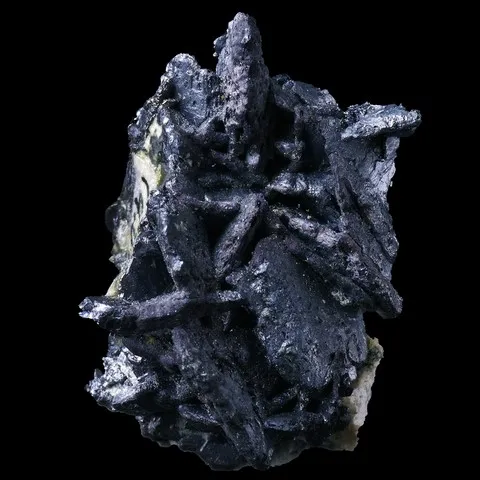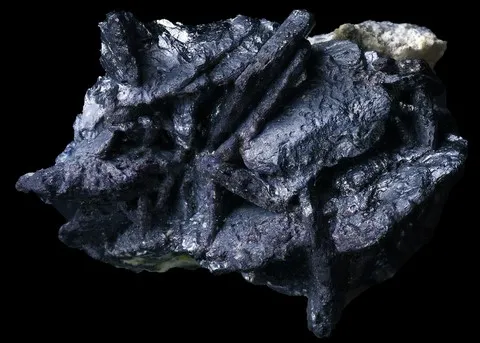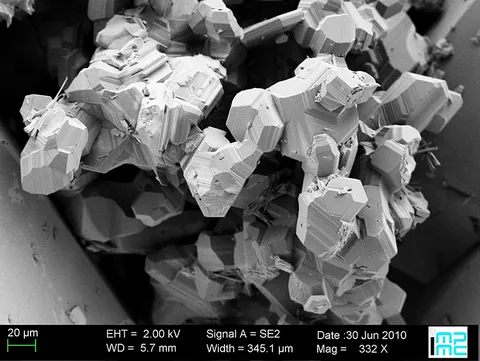CHALCOCITE
Class : Sulfides and sulfosalts
Subclass : Sulfides
Crystal System : Monoclinic
Chemistry : Cu2S
Rarity : Common
Chalcocite is a common mineral typical of hydrothermal veins as well as oxidation zones of copper deposits (copper porphyries, acidic epithermals, sedimentary deposits of the "red beds" type and "kupferschiefer" type deposit). Chalcocite can therefore be primary or secondary, and then formed at the expense of other copper sulphides, such as chalcopyrite or bornite. In addition to the procession of copper minerals that usually accompanies it, it is frequently associated with the primary and secondary minerals of lead, zinc and iron. Chalcocite owes its name to the Greek khalkos (copper) in allusion to its chemical composition. It is a gray-black mineral, blackening in the air, of metallic luster. It provides sometimes beautiful prismatic tabular crystals, pseudohexagonal, frequently twinned (sometimes cruciform twin), however its crystals are very rare, it is found rather in finely grained to compact masses. Chalcocite is also known as epigenies of fossil woods, as incustrations on roots. It constitutes an important copper ore, often dominant in thecemantation zones of large deposits.
Chalcocite in the World
Chalcocite in the World
Chalcocite in France
In France, chalcocite is found at the Chizeuil mine (Saône-et-Loire) in finely grained masses and in Villefranche-de-Rouergues (Aveyron) in infra-millimeter crystals. Opposite, a scanning electron microscope (SEM) image of Falgayrolles crystals (Villefranche-de-Rouergues) produced by Vincent Bourgouin.
Twinning
Twinning is common for chalcocite, especially on {110}, giving pseudohexagonal star shapes. They are also present on {032} and {112}.
Fakes and treatments
No fake recorded for this mineral species.
Hardness : 2.5 to 3
Density : 5.5 to 5.8
Fracture : Conchoidal
Streak : Gray to black
TP : Opaque
RI : -
Birefringence : -
Optical character : -
Pleochroism : None
Fluorescence : None
Solubility : Nitric acid
Magnetism : Diamagnetic
Radioactivity : None



